1. Overview
Jack French Kemp (1935-2009) was a prominent American politician and professional football player who left a significant mark on both fields. He served as the 9th Secretary of Housing and Urban Development from 1989 to 1993 under President George H. W. Bush, following nine terms in the United States House of Representatives from 1971 to 1989, representing New York. A Republican, he was the party's vice presidential nominee in the 1996 election, running with Bob Dole against Bill Clinton and Al Gore.
Before his political career, Kemp was a highly successful quarterback in professional football for 13 years. He notably played in the American Football League (AFL) for its entire 10-year existence, leading the Buffalo Bills to two consecutive championships and earning the AFL Most Valuable Player award in 1965. He also co-founded and served multiple terms as president of the AFL Players Association, demonstrating early leadership and advocacy skills.
Ideologically, Kemp was a leading advocate of supply-side economics, championing low taxes, free markets, and free trade. He played a crucial role in the development of the Economic Recovery Tax Act of 1981, commonly known as the Kemp-Roth tax cut, which significantly influenced Ronald Reagan's economic agenda. Known as a "bleeding-heart conservative," he combined his fiscal conservatism with a deep commitment to urban development and social justice, promoting initiatives like enterprise zones to foster opportunity and reduce poverty in inner cities. His unique blend of economic and social policies underscored his belief in expanding opportunity and prosperity for all Americans.
2. Early life and Education
Jack Kemp's early life and education laid the foundation for his diverse career, blending athletic prowess with a burgeoning interest in economics and social issues.
2.1. Youth and Upbringing
Born on July 13, 1935, in Los Angeles, California, Jack French Kemp was the third of four sons to Frances Elizabeth (née Pope) and Paul Robert Kemp Sr. His father transformed a motorcycle courier service into a trucking company, expanding it from one to 14 trucks, while his mother, Frances, was a well-educated social worker and Spanish teacher. Kemp grew up in the heavily Jewish Wilshire district of West Los Angeles. Despite living in a predominantly Jewish neighborhood, his close-knit, middle-class family adhered to the Church of Christ, Scientist.
During his youth, sports were a central focus for Kemp; he famously wrote a school essay on the forward pass as an important invention. His mother, however, encouraged him to broaden his interests through piano lessons and visits to the Hollywood Bowl. He attended Melrose Avenue's Fairfax High School, which was notable for its large population of both Jewish students and children of celebrities. Over 95% of his classmates were Jewish, an experience that later made him a strong supporter of Jewish causes. Among his classmates were musician Herb Alpert and baseball pitcher Larry Sherry. During his high school years, Kemp worked alongside his brothers at his father's trucking company in downtown Los Angeles. In his spare time, he was an avid reader, particularly favoring history and philosophy books.
2.2. College Career
After graduating from Fairfax High School in 1953, Kemp enrolled in Occidental College, a founding member of the NCAA Division III Southern California Intercollegiate Athletic Conference. He chose Occidental specifically because its college football team employed professional formations and plays, hoping it would help him achieve his aspiration of becoming a professional quarterback. Standing at 5 in and weighing 175 lb (175 lb), he considered himself too small to play for larger programs like the USC Trojans or UCLA Bruins.
At Occidental, Kemp was a multi-talented athlete, excelling as a record-setting javelin hurler. In football, he played various positions, including quarterback, defensive back, place kicker, and punter. Despite being near-sighted, he displayed remarkable tenacity on the field. As the starting quarterback, he led the Occidental Tigers to records of 6-2 in 1955 and 3-6 in 1956. He was named a Little All-America player in a year when he threw for over 1.10 K yd, leading the nation's small colleges in passing. He was a member of the Alpha Tau Omega fraternity, along with his close friend Jim E. Mora, who later became an NFL head coach. Another college teammate was Ron Botchan, who became an NFL referee and officiated five Super Bowls. Kemp, notably, declined to participate in student government during his college years.
Upon graduating from Occidental in 1957 with a degree in physical education, he pursued postgraduate studies in economics at Long Beach State University and California Western University in San Diego. He also served in the United States military from 1958 to 1962.
3. Football Career
Jack Kemp's professional football career was marked by perseverance, significant achievements, and a strong commitment to player advocacy, laying a foundation for his future political endeavors.
3.1. Early Career and AFL Involvement
After being selected by the Detroit Lions in the 17th round of the 1957 NFL draft, Kemp was released before the 1957 NFL season began. He spent 1957 with the Pittsburgh Steelers and 1958 on the taxi squads of the San Francisco 49ers and New York Giants. While with the Giants, he was part of the team during the 1958 NFL Championship Game, famously known as "The Greatest Game Ever Played" and the first NFL playoff game to go into overtime, though as a third-string quarterback on the taxi squad, he did not play.
In 1958, Kemp joined the United States Army Reserve, serving a year of active duty for initial training. From 1958 to 1962, he was a member of the San Diego-based 977th Transportation Company. When his unit was activated for the Berlin Crisis of 1961, Kemp received a medical exemption for a chronically separated left shoulder, which led to his discharge from the Reserve in July 1962.
In 1959, with limited opportunities in the NFL, Kemp played one game for the Calgary Stampeders of the Canadian Football League (CFL). After being cut from five professional teams (Lions, Steelers, Giants, 49ers, and Stampeders), and despite his family's encouragement to pursue other paths, Kemp found a new opportunity. On February 9, 1960, the newly formed American Football League (AFL) signed agreements with the NFL and CFL to prevent tampering with players. Players like Kemp, with some NFL experience, were often signed by the AFL at this time. Kemp signed as a free agent with the AFL's Los Angeles Chargers.
Under coach Sid Gillman, Kemp flourished. In 1960, he led the Chargers to a Western Division Championship with a 10-4 record. He finished second in the league in passing attempts, completions, and yards, becoming one of the league's first 3.00 K yd passers. He led the AFL in yards per completion and times sacked. The Chargers' offense, under Kemp, averaged 46 points over its last four games and scored over 41 points in five of its last nine. In the 1960 American Football League Championship Game, the Chargers lost to the Houston Oilers 7-6.
In 1961, the Chargers moved from Los Angeles to San Diego. Kemp led the relocated team to a 12-2 record and another Western Division Championship. He again finished second in passing yards, this time to George Blanda. In the 1961 American Football League Championship Game rematch against the Oilers, the Chargers scored only a fourth-quarter field goal in a 10-3 loss.
During the 1962 season, Kemp broke his middle finger in the second game, causing him to be sidelined. He famously persuaded his doctors to set his broken finger around a football to preserve his grip. Chargers coach Sid Gillman placed Kemp on waivers, hoping to discreetly stash him. However, Buffalo Bills coach Lou Saban claimed Kemp for a mere 100 USD waiver fee on September 25, 1962, a move sportswriter Randy Schultz later called one of the biggest bargains in professional football history. Despite attempts by the Dallas Texans and Denver Broncos to claim him, AFL Commissioner Joe Foss awarded Kemp to Buffalo.
Despite Kemp's initial reluctance to move to Buffalo, he would become known for his diverse reading interests, including Henry Thoreau, which sometimes drew chidings from Saban. Injuries limited his play in 1962, but he still made the AFL All-Star team. The Bills finished 7-6-1. In 1963, a four-season starting quarterback battle began between Kemp and Daryle Lamonica. Lamonica acknowledged learning much from Kemp, stating they were a "great one-two punch." Kemp again placed second in passing attempts, completions, and yards, and tied for second in rushing touchdowns. The Bills finished 7-6-1, tying for the Eastern Division lead, but lost the playoff game to the Boston Patriots 26-8 in 10 °F weather.
Kemp earned a reputation as the "clubhouse lawyer" for the Bills, mediating conflicts, including managing star player Cookie Gilchrist and preventing Saban from cutting him. In 1964, Kemp led the team to a 12-2 regular season record and their first AFL Championship, scoring the final touchdown in a 20-7 victory. He also played a key role in the boycott of the 1965 American Football League All-Star game in New Orleans, Louisiana, due to racial discrimination against Black players, leading to the game's relocation to Houston, Texas.
The 1965 team saw a shift to a more pass-oriented offense after Gilchrist was traded. Kemp's performance, leading the team to a 10-3-1 record and a second consecutive AFL Championship with a 23-0 victory over his former team, the Chargers, earned him a share of the AFL MVP award, along with the Associated Press award and the Championship Game Most Valuable Player award.
Under new head coach Joe Collier in 1966, Kemp led the Bills to their third consecutive division title with a 9-4-1 record. However, they lost the 1966 American Football League Championship Game to the Kansas City Chiefs 31-7, missing out on Super Bowl I. Kemp was named an AFL All-Star for the sixth consecutive year. The 1967 season saw the Bills endure a 4-10 record, and Kemp was not selected for the All-Star game for the first time in his AFL career.
A right knee injury in the 1968 preseason forced Kemp to miss the entire 1968 season, during which the Bills went 1-12-1. Despite his return in 1969 alongside rookie O. J. Simpson, the Bills finished 4-10. Kemp earned his seventh AFL All-Star selection in the league's final year. He was approached by the Erie County Republican Party about running for the United States Congress. After the January 17, 1970, AFL All-Star game, Kemp consulted with his wife and decided to enter politics, despite having a four-year, no-cut contract with the Bills.
3.2. Professional Achievements and Statistics
Kemp's professional football career spanned 13 years, with notable success primarily in the American Football League (AFL). He consistently demonstrated strong leadership and impressive statistics, making him one of the league's most recognized figures.
He led the Buffalo Bills to the AFL playoffs for four consecutive years (1963-1966), three consecutive Eastern Division titles (1964-1966), and two consecutive AFL Championships (1964-1965). He holds the league records for career passes attempted, completions, and yards gained passing. He also holds the same career records in AFL Championship Games for passing attempts, completions, and yardage, and ranks second in many other championship game categories, including career and single-game passer rating. With 40 rushing touchdowns, he ranks third among NFL or AFL quarterbacks, behind Steve Young (52) and Otto Graham (44).
Kemp was named a Sporting News All-League selection at quarterback in 1960 and 1965, and was co-MVP of the AFL in 1965. He was the only AFL quarterback to be listed as a starter for all 10 years of the league's existence and was one of only 20 players to play for all 10 of those years. His number 15 jersey was retired by the Buffalo Bills in 1984, an honor reflecting his significant impact on the franchise. In 2012, the Professional Football Researchers Association inducted Kemp into the PRFA Hall of Very Good Class of 2012. He is also a member of the Greater Buffalo Sports Hall of Fame and the Buffalo Bills' Wall of Fame.
Despite his success and AFL records, Kemp also appears in the NFL record books for less favorable achievements, including holding the former record for most quarterback sacks in a game. Although he achieved many records, Joe Namath and Len Dawson were ultimately selected as the quarterbacks for the All-Time AFL team, indicating a difference in historical perception.
The Theodore Roosevelt Award, the highest honor bestowed by the NCAA, was presented to Kemp in 1992, recognizing his achievements and principles. In 2006, he was named one of the association's 100 most influential student-athletes.
Below are his career statistics:
3.2.1. Regular season
| Year | Team | Games | Passing | Rushing | ||||||||||||
|---|---|---|---|---|---|---|---|---|---|---|---|---|---|---|---|---|
| GP | GS | Record | Cmp | Att | Pct | Yds | Avg | TD | Int | Rtg | Att | Yds | Avg | TD | ||
| 1957 | PIT | 4 | 0 | - | 8 | 18 | 44.4 | 88 | 4.9 | 0 | 2 | 19.9 | 3 | -1 | -0.3 | 0 |
| 1960 | LAC | 14 | 12 | 9-3 | 211 | 406 | 52.0 | 3,018 | 7.4 | 20 | 25 | 67.1 | 54 | 238 | 4.4 | 8 |
| 1961 | SD | 14 | 14 | 12-2 | 165 | 364 | 45.3 | 2,686 | 7.4 | 15 | 22 | 59.2 | 43 | 105 | 2.4 | 6 |
| 1962 | SD / BUF | 6 | 5 | 3-2 | 64 | 139 | 46.0 | 928 | 6.7 | 5 | 6 | 62.3 | 20 | 84 | 4.2 | 2 |
| 1963 | BUF | 14 | 12 | 5-6-1 | 193 | 384 | 50.3 | 2,910 | 7.6 | 13 | 20 | 65.1 | 50 | 239 | 4.8 | 8 |
| 1964 | BUF | 14 | 13 | 11-2 | 119 | 269 | 44.2 | 2,285 | 8.5 | 13 | 26 | 50.9 | 37 | 124 | 3.4 | 5 |
| 1965 | BUF | 14 | 13 | 9-3-1 | 179 | 391 | 45.8 | 2,368 | 6.1 | 10 | 18 | 54.8 | 36 | 49 | 1.4 | 4 |
| 1966 | BUF | 14 | 14 | 9-4-1 | 166 | 389 | 42.7 | 2,451 | 6.3 | 11 | 16 | 56.2 | 40 | 130 | 3.3 | 5 |
| 1967 | BUF | 14 | 11 | 3-8 | 161 | 369 | 43.6 | 2,503 | 6.8 | 14 | 26 | 50.0 | 36 | 58 | 1.6 | 2 |
| 1969 | BUF | 14 | 11 | 4-7 | 170 | 344 | 49.4 | 1,981 | 5.8 | 13 | 22 | 53.2 | 37 | 124 | 3.4 | 0 |
| Career | 122 | 105 | 65-37-3 | 1,436 | 3,073 | 46.7 | 21,218 | 6.9 | 114 | 183 | 57.3 | 356 | 1,150 | 3.2 | 40 | |
3.2.2. Postseason statistics
| Year | Team | Games | Passing | Rushing | ||||||||||||
|---|---|---|---|---|---|---|---|---|---|---|---|---|---|---|---|---|
| GP | GS | Record | Cmp | Att | Pct | Yds | Avg | TD | Int | Rtg | Att | Yds | Avg | TD | ||
| 1960 | LAC | 1 | 1 | 0-1 | 21 | 41 | 51.2 | 171 | 4.2 | 0 | 2 | 41.8 | 3 | 19 | 6.3 | 0 |
| 1961 | SD | 1 | 1 | 0-1 | 17 | 32 | 53.1 | 226 | 7.1 | 0 | 4 | 36.2 | 4 | 5 | 1.3 | 0 |
| 1963 | BUF | 1 | 1 | 0-1 | 10 | 21 | 47.6 | 133 | 6.3 | 0 | 1 | 48.3 | 2 | -4 | -2.0 | 0 |
| 1964 | BUF | 1 | 1 | 1-0 | 10 | 20 | 50.0 | 188 | 9.4 | 0 | 0 | 82.9 | 5 | 16 | 3.2 | 1 |
| 1965 | BUF | 1 | 1 | 1-0 | 8 | 19 | 42.1 | 155 | 8.2 | 1 | 1 | 66.8 | 0 | 0 | 0.0 | 0 |
| 1966 | BUF | 1 | 1 | 0-1 | 12 | 27 | 44.4 | 253 | 9.4 | 1 | 2 | 59.6 | 1 | 3 | 3.0 | 0 |
| Career | 6 | 6 | 2-4 | 78 | 160 | 48.8 | 1,126 | 7.0 | 2 | 10 | 50.2 | 15 | 39 | 2.6 | 1 | |
3.3. Players Association Activities
Kemp was a pioneer in advocating for professional football players' rights. He co-founded the AFL Players Association with Tom Addison of the Boston Patriots and was elected its president five times. His leadership in the players' union was a significant aspect of his career, and his involvement in labor issues influenced his tendency to sometimes align with Democrats later in his political life. He notably saw firsthand the racial discrimination faced by African American players, which led him to support a boycott of the 1965 AFL All-Star Game in New Orleans, resulting in the game's relocation. This demonstrated his commitment to racial equality, a principle he carried into his political career, stating that the "huddle is colorblind."
4. Political Career
Jack Kemp's political career, following his successful football career, spanned nearly three decades and established him as a distinctive voice within the Republican Party, known for his innovative economic ideas and progressive social stances.
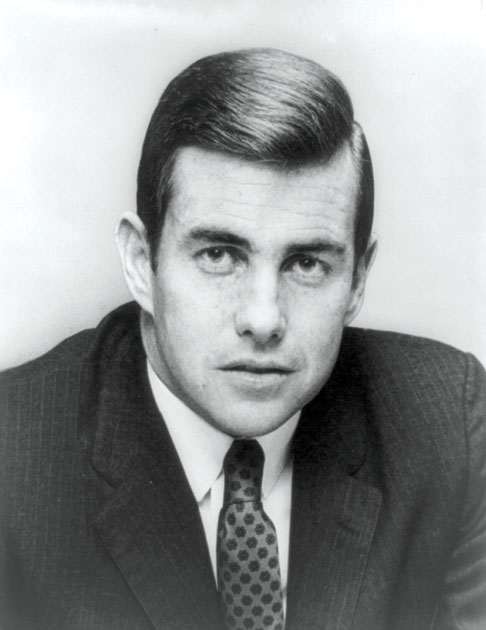
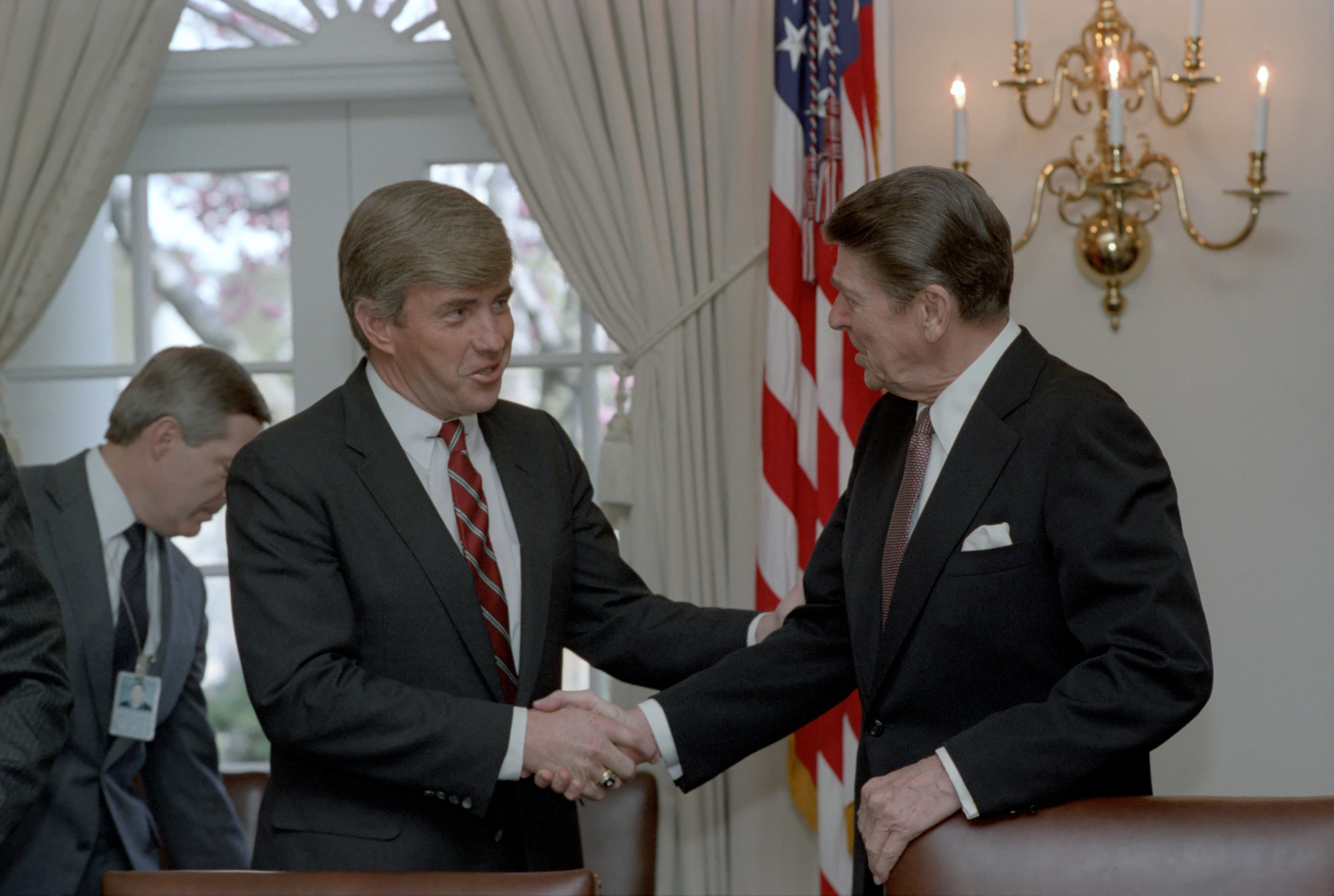
4.1. Early Political Involvement
Kemp's political engagement began long before his election to Congress. In 1960 and 1961, he worked as an editorial assistant for Herb Klein, editor of The San Diego Union-Tribune and a future aide to Richard Nixon. Kemp subsequently volunteered for Barry Goldwater's 1964 presidential campaign and Ronald Reagan's successful 1966 California gubernatorial campaign. During the 1967 football off-season, he worked on Reagan's staff in Sacramento. By 1969, he was serving as a special assistant to the Republican National Committee chairman.
Kemp was a voracious reader whose political views were shaped by early readings of Goldwater's The Conscience of a Conservative, Ayn Rand's novels such as The Fountainhead, and Friedrich von Hayek's The Constitution of Liberty. From his football career, he developed a strong belief in racial equality, stating, "I wasn't there with Rosa Parks or Dr. King or John Lewis. But I am here now, and I am going to yell from the rooftops about what we need to do." His football colleagues, like John Mackey, confirmed this influence, explaining that the "huddle is colorblind."
4.2. U.S. House of Representatives
As a self-described "bleeding-heart conservative," Kemp represented a traditionally Democratic-voting part of the suburban Buffalo region, known as the Southtowns, in the United States House of Representatives from 1971 to 1989. He was described as possessing the charisma reminiscent of John F. Kennedy. Journalist David Rosenbaum characterized Kemp as an independent politician who often legislated outside his committees' jurisdictions, favoring ideals and principles over strict adherence to party platforms. As a supply-sider, he prioritized economic growth over balanced budgeting, sometimes trivializing the latter.
The Erie County, New York Republican Party initially drafted Kemp to run after incumbent congressman Richard D. McCarthy decided to pursue a Senate bid. During his first campaign, his district faced economic challenges, and The New York Times portrayed him as a John F. Kennedy-esque figure campaigning on family values, patriotism, and his sports background. Elected in a class of 62 freshmen, he was one of six newcomers, including Ronald Dellums, Bella Abzug, and Pete du Pont, highlighted by Time magazine. Nixon administration aides encouraged Kemp to support the Cambodian invasion and oppose criticism of Nixon's war policies to solidify military hawk support.
Kemp championed several Chicago school and supply-side economics issues, advocating for economic growth, free markets, free trade, tax simplification, and lower tax rates on employment and investment income. He was a long-time proponent of the flat tax. He also defended the use of anti-Communist contra forces in Central America, supported the gold standard, advocated for civil rights legislation, opposed abortion, and was the first lawmaker to popularize enterprise zones. He supported these zones to foster entrepreneurship, job creation, and homeownership among public housing tenants.
Kemp sometimes sounded like a liberal Democrat, supporting affirmative action and rights for illegal immigrants. The New York Times described him as the most proactive combatant in the War on Poverty since Robert F. Kennedy. He differed from traditional Rockefeller Republicans and figures like Lyndon Johnson by supporting incentive-based systems rather than conventional social programs. For his commitment to inner-city concerns from within the Republican party, David Gergen praised him as a "courageous voice in the wilderness." While socially liberal on many issues and supportive of civil liberties for homosexuals, he opposed certain gay rights, such as the right to teach in schools. Kemp sometimes viewed his role as a "freewheeling, entrepreneurial, wildcatting backbencher."
In 1974, Time magazine identified the 38-year-old second-term congressman Kemp as a future leader in its "Faces for the Future" feature. Another early magazine appearance was in a 1978 issue of Esquire. Kemp considered running for the U.S. Senate in 1980 and was mentioned as a contender to unseat Jimmy Carter in the 1980 United States presidential election. He was also a front-runner for the vice presidency at the 1980 Republican National Convention, receiving 43 votes from conservative critics of George H. W. Bush.
After being reelected for a sixth term in 1980, his Republican peers elected him to a party leadership position. He served seven years as chairman of the House Republican Conference. This promotion occurred immediately after Kemp and David Stockman urged Reagan to dedicate his first 100 days to an economic package with Congress. Kemp considered running for Governor of New York in 1982 but remained in the House. By 1984, many viewed him as Reagan's heir apparent. Notably, Kemp did not hold a fundraiser outside his suburban Western New York district until well into his eighth term.
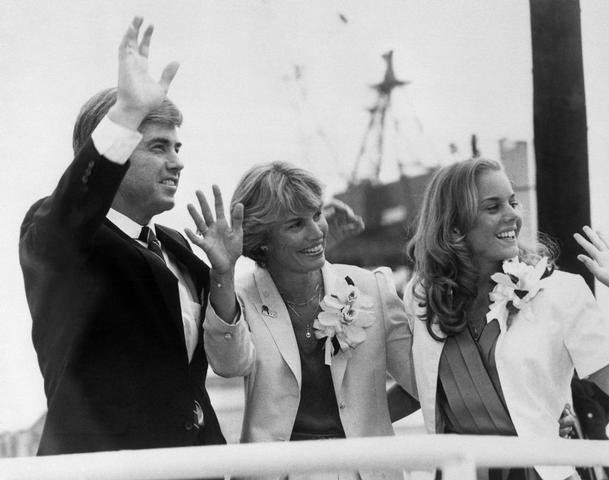
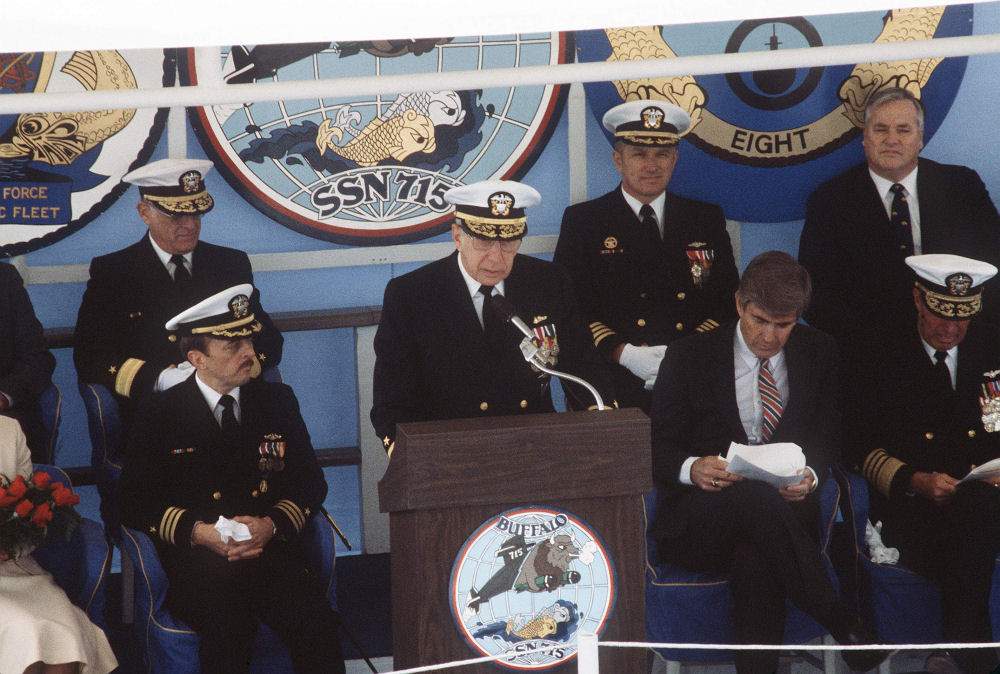
Kemp's introduction to supply-side economics came in 1976 when The Wall Street Journal's Jude Wanniski interviewed him. After an extensive discussion, Kemp became convinced by University of Southern California professor Arthur Laffer's supply-side principles. In 1978, he and Senator William Roth of Delaware proposed tax-cutting legislation. Kemp is widely credited for the inclusion of supply-side economics in President Reagan's economic plan, although some credit Robert Mundell, Laffer, Robert Bartley, and Wanniski for the theory's broader recognition. In 1979, Kemp authored An American Renaissance, promoting his message that "A rising tide lifts all boats." While the early 1980s tax cuts are attributed to Reagan, they were initiated by Kemp and Roth through their 1981 Kemp-Roth Tax Cut legislation. Reagan's budget, based on this legislation, passed despite objections from United States House Committee on Ways and Means Chairman Dan Rostenkowski.
During the Reagan years, Kemp and his followers prioritized tax cuts and economic growth over budget balancing. These tax cuts are credited by conservatives for the significant economic growth from 1983 to 1990, one of the longest peacetime expansions in U.S. history. Kemp acknowledged that Federal Reserve chairman Paul Volcker's success in curbing inflation and a favorable regulatory environment were also major factors. Critics, however, pointed out that the expansion was partly fueled by sectors like gaming, Prison, medical treatment, and credit card use.
An early tax reform attempt by Kemp was an unsuccessful 1979 proposal to index tax brackets for cost of living fluctuations, which was later incorporated into Reagan's 1980 package. He also co-sponsored a legislative attempt at enterprise zones in 1980. A challenging period for Kemp came in 1982 when Reagan decided to reverse some tax cuts and promote increases, which Kemp strongly opposed. Nevertheless, the revised taxes passed. In 1983, Kemp repeatedly opposed Chairman Volcker's policies, including domestic monetary involvement and funding for the International Monetary Fund.
Kemp delivered speeches at several Republican National Conventions, including in 1980 in Detroit, Michigan, and in 1984 in Dallas, Texas. During the 1984 Convention, alongside Newt Gingrich, Kemp asserted control over the Republican Party Platform Committee, much to the dismay of senators Bob Dole and Howard Baker. While his official role was chairman of the foreign policy subcommittee, his real influence was on the grammatical structure of the plank on tax hikes, which aimed to prevent future tax increases. By 1985, Kemp was considered a leading contender for the 1988 presidential nomination. He also spoke on free enterprise zones at the 1992 Republican National Convention in Houston, Texas.
Kemp was a vocal critic of association football, known as soccer in the United States. In 1986, during a House floor debate on whether the U.S. should host the 1994 FIFA World Cup, he controversially stated: "I think it is important for all those young out there-who someday hope to play real football, where you throw it and kick it and run with it and put it in your hands-a distinction should be made that football is democratic capitalism, whereas soccer is a European socialist sport." While he later claimed his "tongue was firmly planted in cheek" and compared it to George Carlin's comedy routine, the statement drew significant backlash. He continued to insist that soccer's main problem was its lack of a "quarterback" but acknowledged that about half his grandchildren played soccer and that he had "changed" his position, even attending the 1994 FIFA World Cup with Henry Kissinger.
4.3. Presidential Campaign (1988)
In 1988, Jack Kemp launched a bid for the presidency, which, if successful, would have made him the first person to transition directly from the United States House of Representatives to the White House since James A. Garfield. He enlisted Ed Rollins, who directed Reagan's 1984 re-election campaign, as an advisor for his exploratory committee. However, Kemp struggled to position himself as the primary alternative to Vice President George H. W. Bush. Despite being a successful man of ideas and a visionary, the general public largely unfamiliar with him, and many Republican voters found themselves unacquainted with Kemp early in his campaign. Political pundits, while recognizing his intellect, also noted him as a verbose speaker who sometimes struggled to connect with his audience.
Kemp attempted to appeal to conservatives, but his libertarian philosophies of tolerance and individual rights, coupled with his commitment to supporting minorities, women, blue-collar workers, and organized labor, often clashed with the social and religious values of the conservative base. Democrats, conversely, sometimes viewed Kemp's free-market philosophies as a form of laissez-faire anarchy, though Kemp himself emphasized that moves toward a more laissez-faire system should be carefully considered.
After the May 1987 Gary Hart-Donna Rice scandal, The New York Times issued a questionnaire to all 14 presidential candidates, requesting personal information such as psychiatric records and access to FBI files. Kemp publicly rejected the inquiry as "beneath the dignity of a presidential candidate," joining candidates from both parties who expressed concerns about personal privacy.
Despite an early positive start with several key endorsements in New Hampshire, Bush retained the support of much of the Republican political establishment in New York. Kemp's campaign, which relied heavily on expensive direct mail fundraising techniques, quickly ran into financial difficulties, forcing it to borrow against anticipated federal matching funds. To counter perceptions of social moderation, Kemp clarified his strong opposition to abortion, his support for the Strategic Defense Initiative (SDI), and his advocacy for a stronger military than that favored by Secretary of State George Shultz. He even called for Shultz's resignation, claiming he had neglected freedom fighters in Afghanistan and Nicaragua and wavered on SDI. In September 1987, Kemp traveled to Costa Rica, Honduras, and El Salvador, accompanied by over 50 U.S. conservative leaders, to lobby against the Arias Peace Plan, which conservatives viewed as too conciliatory to Central American communists.
Although his platform covered a wide range of political issues, Kemp's primary campaign weapon remained his fiscal policy centered on tax cuts. He opposed a Social Security benefits freeze and endorsed a freeze on government spending. Some critics viewed his supply-side stance as an attempt to disregard the national budget deficit. By late 1987, pundits observed that Kemp needed to attract support from the far right on non-social issues. Kemp was among the majority of Republican candidates who opposed Reagan's INF Treaty agreement with the Soviet Union's Mikhail Gorbachev, despite general Republican voter approval of the treaty. This "sabre-rattling" stance was adopted by all candidates with low poll support, seeking to consolidate the right-wing vote. By early 1988, moderates like Bush and Dole were clear front-runners, leaving Kemp to battle with Pat Robertson for the position of conservative alternative.
Kemp utilized a somewhat negative advertising campaign that initially appeared to boost him into serious contention. His 1988 campaign was primarily built on the dual platform of supply-side economics and inner-city enterprise zones. In Bare Knuckles and Back Rooms: My Life in American Politics, campaign chairman Rollins described Kemp as a candidate with significant foibles, noting his tendency to ignore speech timers, refuse to call contributors, and decline debate practice. His campaign ultimately ended after a humbling Super Tuesday, where his 39 delegates were fewer than those secured by Bush, Dole, and Robertson. Following his withdrawal, he was still considered a potential candidate for the vice presidential nomination. In 1989, the Kemps moved their official residence from Hamburg, New York, to Bethesda, Maryland, where he resided until his death. In 1994, Kemp's 1988 campaign settled with the Federal Election Commission, agreeing to pay 120.00 K USD in civil penalties for various election law violations, including excessive contributions, improper corporate donations, press overbilling, exceeding spending limits in Iowa and New Hampshire, and failing to reimburse corporations for providing air transportation.
4.4. Secretary of Housing and Urban Development
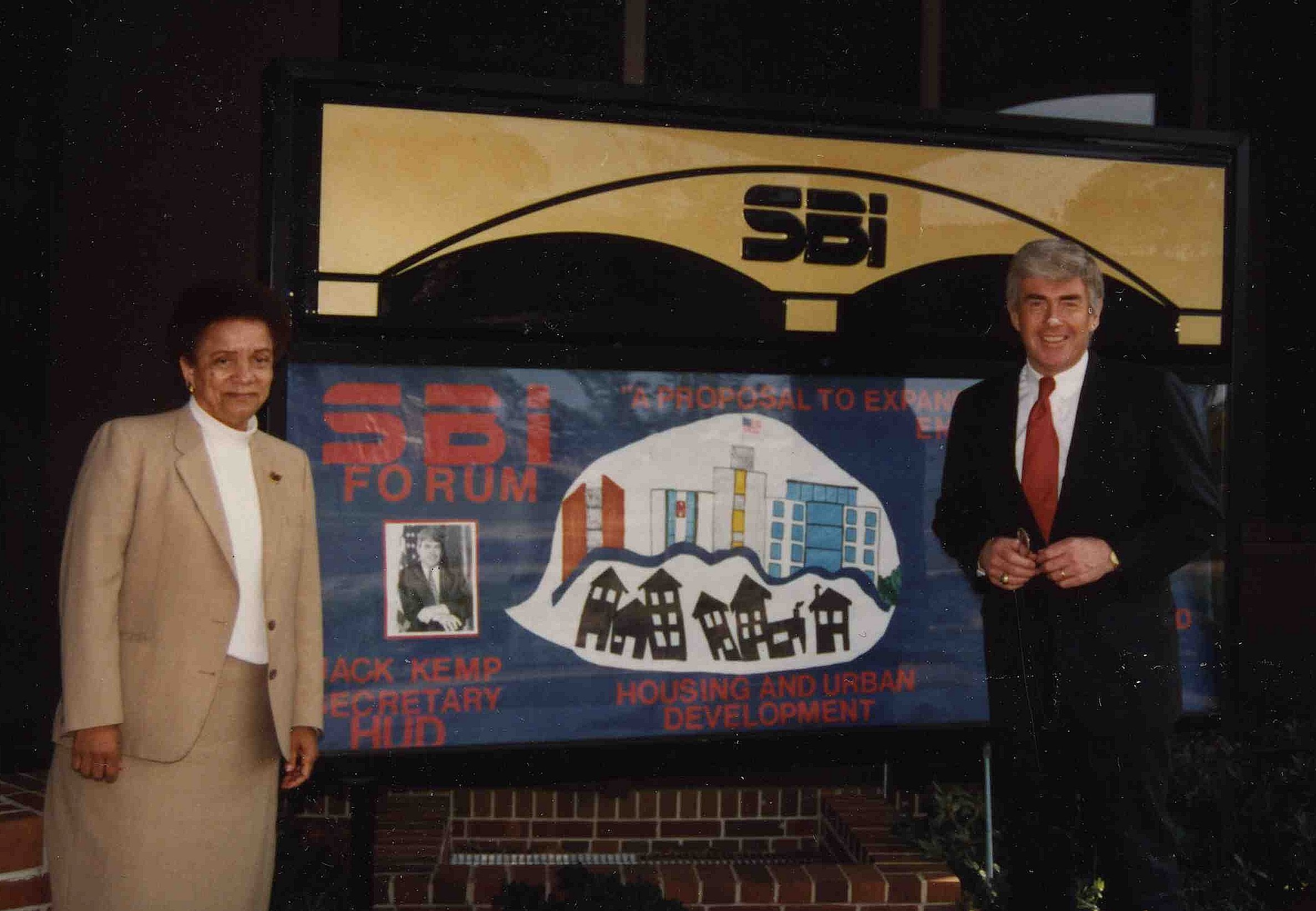
As a "bleeding-heart conservative," Jack Kemp was a logical choice for President George H. W. Bush to serve as Secretary of Housing and Urban Development (HUD) from 1989 to 1993. His appointment aimed to foster both public sector and private sector methods to address public housing needs. However, the tenure was immediately complicated by scandals from the previous HUD Secretary, Samuel Pierce, and perceived neglect from the Reagan administration.
Kemp faced significant challenges in implementing his major initiatives: enacting enterprise zones and promoting public housing tenant ownership. The goal of these plans was to transform public housing into tenant-owned residences and to attract industry and business to inner cities through federal incentives. While Kemp was largely unsuccessful in achieving broad policy change in these areas, he was credited with cleaning up HUD's reputation. He also developed a plan to salvage the Federal Housing Administration and implemented an antidrug offensive that involved collaborations with Director of the National Drug Control Policy Bill Bennett. He supported "Operation Clean Sweep" and similar efforts to prohibit firearm possession in public housing.
Despite Kemp's efforts, the Democratic-controlled Congress allocated only 361.00 M USD to his proposed 4.00 B USD housing program designed to encourage tenant homeownership. Kemp also clashed with White House Budget Director Richard Darman, who opposed Kemp's signature project, HOPE (Homeownership and Opportunity for People Everywhere), which involved selling public housing to its tenants. Darman also opposed Kemp's proposed welfare adjustments of government offsets. HOPE was initially presented to White House Chief of Staff John H. Sununu in June 1989, aiming to create enterprise zones, increase subsidies for low-income renters, expand social services for the homeless and elderly, and enact tax changes for first-time homebuyers. Sununu initially opposed it, as did most of the Cabinet. However, in August 1990, Sununu, at the urging of United States Attorney General Dick Thornburgh, encouraged President Bush to endorse Kemp's Economic Empowerment Task Force. Unfortunately, the Persian Gulf War and subsequent budget negotiations overshadowed Kemp's new project. Darman's resistance limited Kemp's funding to 256.00 M USD for his plan, which Kemp tried to increase through appropriations battles. Soon after, the Economic Empowerment Task Force was abolished under Clayton Yeutter, who became the chief domestic policy advisor.
President Bush generally avoided direct federal antipoverty issues, instead using Kemp to articulate the administration's low-priority conservative activist agenda. Kemp received stronger support for his ideas from presidential candidate Bill Clinton than from his own administration. By the time of the Los Angeles riots of 1992, Bush was seen as slow to support enterprise zones, tenant ownership, and welfare reform. Nonetheless, the riots brought Kemp to the forefront of the administration's efforts, although he was initially overlooked. As Charles E. Schumer presciently observed in 1989, "Good ideas with money can do a whole lot. Good ideas without money aren't probably going to do a whole lot," which summarized the lack of funding for Kemp's initiatives. While Kemp struggled to secure federal funding for his visions, he was known for being among the administration's leading users of first class corporate jets, citing lingering effects from a knee injury as the reason for his government-expensed travel.
Generally, his time as HUD Secretary was considered unsuccessful in terms of legislative achievements. However, although he could not secure federal funding for empowerment zones during his tenure, by 1992, 38 states had established their own empowerment zones. Furthermore, in 1994, 3.50 B USD was approved for these zones under President Clinton. Another of Kemp's free market initiatives, which aimed to allow homeowners to subdivide their houses for rental units without excessive bureaucracy, was not implemented by the Clinton administration. In 1992, with H. Ross Perot running a formidable independent campaign, Kemp was again considered a vice presidential candidate.
Kemp's inability to achieve his primary goals was partly attributed to his difficult relationship with other Cabinet members. At one point, he advised James Baker, then White House Chief of Staff, that Bush's best chance for reelection was to dramatically replace his economic advisors. Before the 1992 Republican National Convention, Kemp and six prominent Republican conservatives prepared a controversial memo urging Bush to revise his economic policy. Contemporaneously, conservative Republicans like William F. Buckley Jr. and George Will felt Dan Quayle should be replaced by Kemp as vice president. This followed Kemp's critical assessment of parts of the President's economic policy as "gimmicks" after the 1992 State of the Union Address. Kemp was respected within the party for his willingness to challenge Bush. Towards the end of Bush's administration, insiders began to recognize his value. In late 1991, 81 of the 166 Republican Congressmen signed a letter, co-authored by Curt Weldon and Dan Burton, requesting that Bush grant Kemp more domestic authority as a "domestic policy czar," a suggestion that was perceived as insulting to Bush. Kemp surprisingly remained in the Bush Cabinet for the entire duration of the presidency and was seen as one of the few administration members willing to take tough stands. He did not expect to be retained if the Republicans won reelection in 1992, a sentiment shared by some pundits.
4.5. Vice Presidential Nomination (1996)
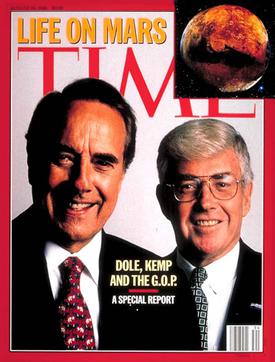
Jack Kemp had a reputation as one of the highest-profile progressive Republicans. When Bob Dole declined an invitation to speak to the National Association for the Advancement of Colored People (NAACP), he suggested Kemp as a substitute even before Kemp's vice presidential nomination. On August 5, 1996, Dole announced a 15% across-the-board tax cut, influenced by both the Steve Forbes campaign and Kemp's tax reform commission. Several of Dole's other campaign ideas also originated from Kemp and William Bennett's Empower America think tank, which included Jeane Kirkpatrick, Vin Weber, Forbes, and Lamar Alexander as principals. For instance, Dole adopted Kirkpatrick's tough foreign policy, Bennett's focus on "right conduct," and Alexander's interest in school choice.
Bennett declined the offer to be Dole's running mate but suggested Kemp, a figure often described as Dole's antagonist. On August 16, 1996, the Republican Party officially chose Kemp as its vice presidential nominee, running alongside Dole. Kemp's selection was seen as a strategic move to attract conservative and libertarian-minded voters, especially those who had supported Dole's tough nomination challengers, Forbes and Pat Buchanan. It is believed that Kemp's prior staffers held influential positions as Dole's senior advisors, contributing to his selection. Dole had a long history of representing the budget-balancing faction of the Republican Party, while Kemp had consistently advocated for tax cuts. Kemp's tax-cutting fiscal record was considered a perfect fit for the ticket's economic platform. When Kemp became Dole's running mate, they were featured on the cover of the August 19, 1996, issue of Time magazine, famously nearly displaced by a story about the reported discovery of extraterrestrial life on Mars.
The two politicians had a long history of ideological clashes. Dole, a longstanding conservative deficit hawk, had even voted against John F. Kennedy's tax cuts. In contrast, Kemp was an outspoken supply-sider. In the early 1980s, Kemp persuaded Reagan to make a 30% across-the-board tax cut a central feature of his 1980 presidential campaign. Once Reagan was elected, Dole, as the Senate Finance Committee chairman, resisted the plan. The major confrontation occurred after the tax plan was approved when Dole proposed subsequent tax increases, which he called "reforms." Kemp vocally opposed these reforms, even publishing an op-ed in The New York Times, which enraged Dole. Reagan supported Dole's reforms, leading Kemp to rally allies to stop the act, which ultimately passed in 1982. At the 1984 Republican National Convention, Kemp, along with allies like Newt Gingrich and Trent Lott, added a plank to the party platform that committed Reagan to ruling out tax increases, an action Gingrich called "Dole proofing" the platform. In 1985, Dole proposed an austere budget that passed the Senate narrowly, with Pete Wilson casting the tying vote and Vice President Bush casting the deciding vote. Kemp, in meetings with the president that excluded Dole, reworked the budget to exclude crucial Social Security cutbacks, which was seen as Dole's most crushing political defeat and contributed to the Republican loss of Senate control. Their antagonism continued into the 1988 presidential election. After Bush won and Kemp joined the Cabinet, their paths diverged until 1996, when Kemp endorsed Dole's opponent, Forbes, on the eve of the New York Primary in March.
Dole, despite his disdain for Kemp's economic theories, believed that Kemp-like tax cuts offered his best chance at electoral success. For his part, Kemp also had to make concessions during the campaign: he had to support expelling the children of illegal immigrants from public schools, despite his long-standing opposition to California's Proposition 187, and temper his opposition to abolishing affirmative-action programs in California. Some critics derided Kemp for these compromises, even calling him a "con artist". From the outset of their campaign, the Dole-Kemp ticket trailed, facing skepticism even within their own party. However, Kemp was able to use his nomination to promote his opposition to Clinton's veto of the partial-birth abortion ban. During the campaign, Kemp and Forbes advocated for a stronger stance on tax cutting than Dole. Generally, Kemp was seen as beneficial to the ticket's chances of catching Bill Clinton, and his advocacy provided a clear picture of the tax reforms that would likely occur if their campaign succeeded. Kemp was believed to be able to influence several types of swing voters, particularly in his native state of California, and even Democrats feared his potential to attract voters.
After receiving the nomination, Kemp became the ticket's primary spokesperson for minorities and inner-city issues. Due to his agreement with the self-help policy endorsed by Louis Farrakhan in various forums, including the Million Man March, Kemp, in a sense, aligned himself with Farrakhan's ideas. However, Farrakhan was perceived as anti-Semitic, and Kemp was considered an ally of Republican Jews, necessitating careful political maneuvering. As the nominee, Kemp sometimes overshadowed Dole, with some referring to him as if he were the presidential nominee. Despite the negative ad campaigns used by the ticket, Kemp remained a very positive running mate, relying on a "pep rally" style campaign tour filled with football-related metaphors and hyperbole. While some enjoyed Kemp's style, referring to him as the "Good Shepherd," critics noted his frequent recounting of football stories over legislative accomplishments. During the campaign, Kemp expressed concern that Republican Party leaders did not wholeheartedly support the ticket. Despite Kemp's voice on minority issues, Colin Powell's support, and polls showing that approximately 30% of Black voters identified as conservative on issues like school prayer, school vouchers, and criminal justice, Republicans were unable to significantly improve their historical support levels from African-American voters.
Both Al Gore and Kemp harbored presidential aspirations, which elevated the tone of their vice presidential debate. Additionally, Gore and Kemp were long-time friends, unlike Gore and his previous opponent, Dan Quayle. As a result, their debate avoided personal attacks. However, some felt Kemp failed to adequately counter substantive attacks. In the final October 9, 1996, vice presidential debate, held while the Dole-Kemp ticket lagged significantly in national polls, Kemp was widely considered to have been soundly beaten. Al Gore's performance is often regarded as one of the best modern debate performances. The debate covered a wide range of topics, from traditional issues like abortion and foreign policy to an unusual discussion about a recent incident involving baseball player Roberto Alomar cursing and spitting on an umpire. The discussion on Mexico policy was particularly noted for critical review. Gore's victory in the debate was not surprising, given Kemp's previous struggles against Gore and Gore's reputation as an experienced and formidable debater.
5. Political Philosophy and Ideology
Jack Kemp's political philosophy was distinctive, blending traditional conservative principles with a compassionate, populist approach, particularly on economic and social issues.
5.1. Supply-Side Economics
Kemp was a fervent advocate for supply-side economics, a school of thought that posits that economic growth can be best achieved by lowering barriers to production (supply) rather than by increasing demand. He consistently championed principles such as low taxes, free markets, and free trade. A staunch proponent of the flat tax, he believed that simplifying the tax code and reducing tax rates on both employment and investment income would stimulate economic activity and foster greater opportunity.
His first significant encounter with supply-side economics occurred in 1976 when Jude Wanniski of The Wall Street Journal introduced him to Arthur Laffer's theories. After an intensive discussion that lasted until midnight, Kemp fully embraced the supply-side discipline. In 1978, he collaborated with Senator William Roth of Delaware to propose tax-cutting legislation, which became known as the Kemp-Roth Tax Cut. This legislation, passed in 1981, is widely credited as the foundation of Reaganomics and was central to President Reagan's economic plan, despite initial resistance from some within the Republican Party, including Bob Dole.
During the Reagan years, Kemp and his followers consistently promoted tax cuts and economic growth, often downplaying concerns about budget deficits. They believed that these tax cuts were responsible for the significant economic expansion from 1983 to 1990, one of the longest peacetime expansions in U.S. history. Kemp acknowledged that Federal Reserve chairman Paul Volcker's success in curbing inflation and a favorable regulatory environment also contributed significantly to this growth. Beyond tax policy, Kemp also supported the gold standard as a means of ensuring monetary stability. His consistent advocacy for these principles cemented his legacy as a leading voice of fiscal conservatism.
5.2. Urban Development and Social Policy
Kemp distinguished himself as a "bleeding-heart conservative," a term he embraced to describe his approach that combined economic conservatism with a deep concern for the urban poor and disadvantaged communities. He actively promoted initiatives aimed at fostering entrepreneurship, job creation, and expanding homeownership among public housing tenants.
A key component of his urban strategy was the popularization of enterprise zones, which he envisioned as areas where federal incentives would attract industry and business to inner cities. While his efforts to secure substantial federal funding for these zones during his tenure as HUD Secretary were largely unsuccessful, his advocacy contributed to the creation of similar zones in 38 states by 1992, and eventually, 3.50 B USD was allocated for them under the Clinton administration in 1994.
Kemp's approach to poverty reduction differed from traditional social programs championed by Democrats. Instead of relying solely on government handouts, he supported incentive-based systems that empowered individuals and communities. He was often compared to Robert F. Kennedy in his dedication to combating poverty, but with a distinct market-oriented philosophy. For his commitment to inner-city concerns, David Gergen praised him as a "courageous voice in the wilderness" within the Republican party.
On broader social issues, Kemp's positions spanned a spectrum. He was a vocal opponent of abortion, a stance he publicly affirmed after his wife suffered a miscarriage. He supported civil rights legislation and affirmative action, and advocated for the rights of illegal immigrants, notably opposing California's Proposition 187 which sought to bar illegal immigrants from public services. He also opposed restrictions on legal immigration proposed by figures like Lamar Smith and Alan Simpson. While he supported civil liberties for homosexuals, he opposed certain gay rights such as the right to teach in schools. His views on immigration, in particular, often put him at odds with more conservative elements of his party.
5.3. Foreign and Defense Policy
Kemp's foreign and defense policy views were largely aligned with the hawkish wing of the Republican Party, particularly during the Cold War era. He was a strong advocate for a robust military and was critical of what he perceived as conciliatory approaches toward communist regimes.
He staunchly defended the use of contra forces in Central America, arguing for their role in combating communist influence in the region. In September 1987, during his presidential campaign, he traveled to Costa Rica, Honduras, and El Salvador with over 50 conservative leaders to lobby against the Arias Peace Plan, which he and other conservatives believed was too lenient towards Central American communists.
Kemp also expressed opposition to President Reagan's INF Treaty with the Soviet Union's Mikhail Gorbachev. This stance, shared by many other Republican presidential candidates with lower poll numbers at the time, was an attempt to consolidate support from right-wing voters who favored a tougher stance against the Soviet Union. He called for the resignation of Secretary of State George Shultz, claiming Shultz had neglected freedom fighters in Afghanistan and Nicaragua and showed weakness on the Strategic Defense Initiative (SDI). In his later career, in 2006, Kemp co-chaired the Council on Foreign Relations task force on Russia with John Edwards, which produced a document titled "Russia's Wrong Direction: What the United States Can and Should Do," indicating his continued interest in international affairs.
6. Personal Life
Beyond his public life in sports and politics, Jack Kemp's personal life was characterized by a strong family foundation and an evolving faith.
6.1. Marriage, Family, and Faith
Jack Kemp graduated from Occidental College in 1957 and married his college sweetheart, Joanne Main, after her graduation from Occidental in 1958. Joanne Main grew up in Fillmore, California. Their wedding was presided over by Keith Beebe, Kemp's Biblical Literature professor.
The Kemps had four children. Their two sons, Jeff Kemp (born 1959) and Jimmy Kemp (born 1971), both followed in their father's footsteps as professional football quarterbacks, with Jeff playing in the NFL from 1981 to 1991 and Jimmy playing in the CFL from 1994 to 2002. Notably, despite his demanding schedule, Jack never missed any of their games during their childhood or college careers. They also had two daughters, Jennifer Kemp Andrews (born 1961) and Judith Kemp (born 1963).
Joanne Kemp once experienced a miscarriage, an event that Jack Kemp later stated led him to re-evaluate the sanctity of human life and reinforced his staunch opposition to abortion. Following his marriage, Kemp converted to his wife's Presbyterian faith and identified as a born-again Christian. He was also a Freemason of the 33rd degree in the Northern Masonic Jurisdiction.
7. Later Career and Activities
After leaving public office, Jack Kemp remained highly active as a political advocate, commentator, and businessman, continuing to champion his core beliefs and influence public discourse.
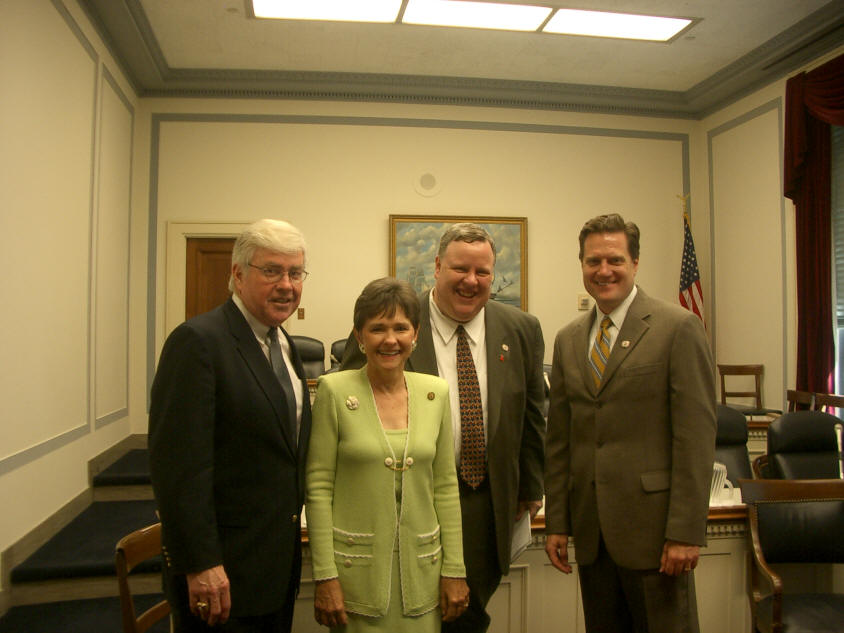
7.1. Post-Public Office Activities
Following his tenure as Secretary of Housing and Urban Development, Kemp earned significant income primarily through public speaking, charging 35.00 K USD per speech. Between 1993 and 1996, he personally earned 6.90 M USD, largely for speaking on behalf of local Republican candidates. He hosted notable fundraising events, including a series during the Super Bowl XXVIII festivities.
In 1993, Kemp, along with William Bennett, Jeane Kirkpatrick, and financial backer Theodore Forstmann, co-founded Empower America, a free market advocacy group. This organization represented the populist wing of the Republican Party, promoting free markets and economic growth while generally avoiding divisive social issues like abortion and gay rights, in contrast to those focused on budget balancing or deficit reduction. Empower America later merged with Citizens for a Sound Economy to form Freedom Works. Kemp resigned as co-chairman of Freedom Works in March 2005 after the Federal Bureau of Investigation (FBI) questioned his ties to Samir Vincent, a Northern Virginia oil trader implicated in the U.N. Oil-for-food scandal. Vincent later pleaded guilty to criminal charges, including acting as an unregistered lobbyist for the Iraqi government of Saddam Hussein. Testimony about Kemp featured prominently in Vincent's trial. Additionally, FBI informant Richard Fino linked Kemp to James Cosentino just weeks before the 1996 election.
Kemp founded and chaired Kemp Partners, a strategic consulting firm aimed at helping clients achieve both business and public policy goals. He also partnered with Edra and Tim Blixseth to promote membership in the exclusive private ski and golf Yellowstone Club. A more controversial venture involved a failed anti-terrorism software company called Blxware, in which Kemp partnered with the Blixseths. Blxware was investigated for allegedly "conning" the federal government out of 20.00 M USD in contracts for software that fraudulently claimed to detect secret messages from Al-Qaeda in television broadcast signals.
7.2. Board Memberships and Advocacy
By 1996, Kemp served as a director on six corporate boards, including Hawk Corporation, IDT Corporation, CNL Hotels and Resorts, InPhonic, Cyrix Corporation, and American Bankers Insurance Group. He briefly served on the board of Oracle Corporation in 1996, resigning when he ran for vice president. He was named to the board of Six Flags, Inc. in December 2005. Kemp chose not to seek re-election to IDT's board in 2006. He also served on the Habitat for Humanity board of directors and the board of Atlanta-based software maker EzGov Inc., as well as Election.com, the company that ran the world's first Internet election (the 2000 Arizona Democratic Primary, won by Al Gore).
In addition to corporate boards, Kemp served on several advisory boards, including the UCLA School of Public Policy Advisory Board and the Toyota Diversity Advisory Board. He also served on the Howard University Board of Trustees starting in 1993. On March 25, 2003, Kemp was selected as chairman of the board of Directors of USA Football, a national advocacy group for amateur football created by the National Football League (NFL) and the NFL Players Association. This organization supports various youth football programs like Pop Warner Little Scholars, American Youth Football, Boys and Girls Clubs of America, National Recreation and Park Association, Police Athletic League, YMCA, and the Amateur Athletic Union. He also served as vice president of NFL Charities.
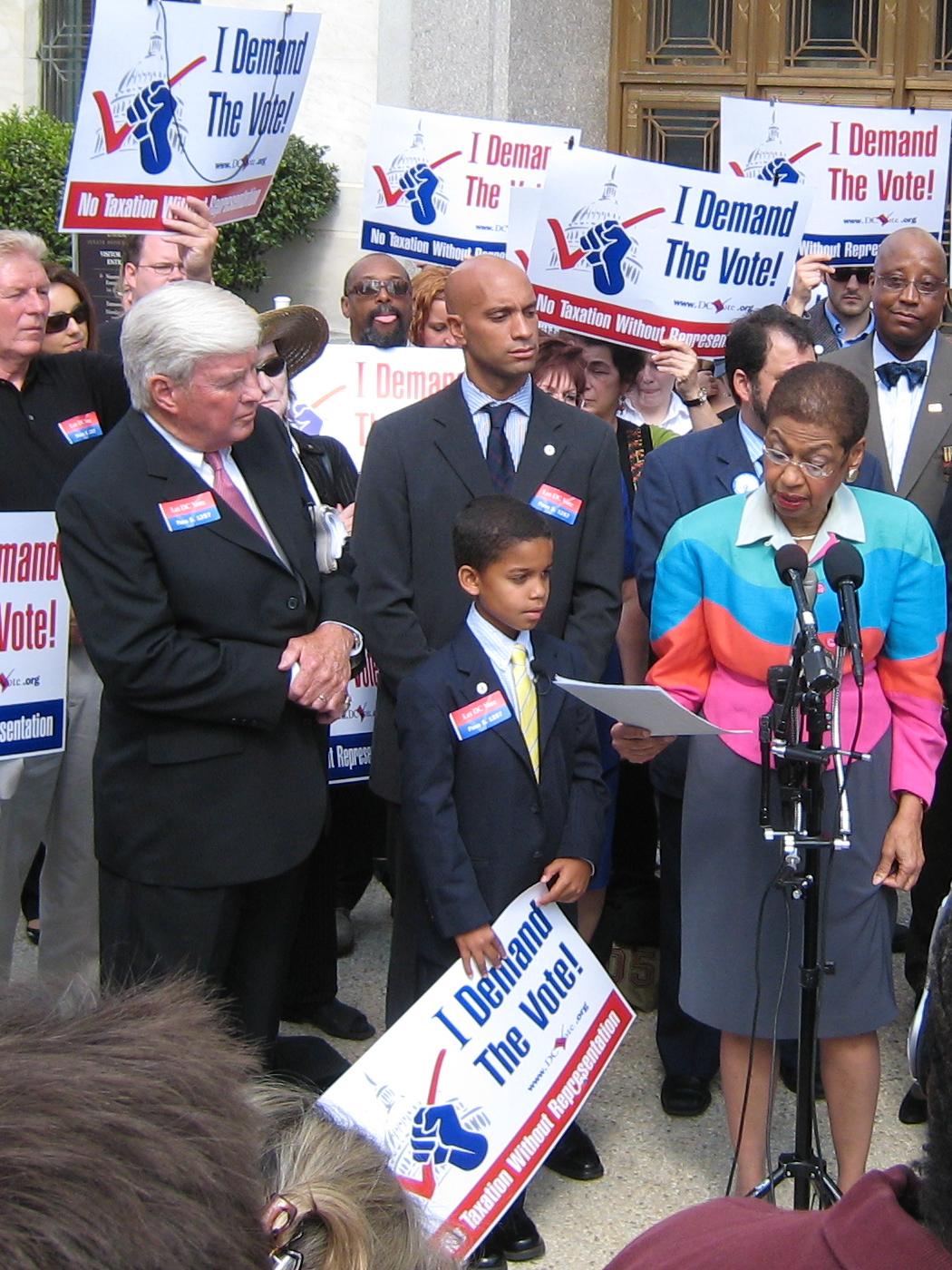
Kemp remained a vocal figure in political issues throughout the late 1990s. He criticized President Clinton's perceived lax policies towards South Korea related to the International Monetary Fund. In early 1998, he was considered a serious contender for the 2000 United States presidential election, but his campaign prospects dwindled, and he ultimately endorsed the eventual winner, George W. Bush. Kemp continued his political advocacy for reform in taxation, Social Security, and education. When a 1997 budget surplus was earmarked for debt repayment, Kemp argued for tax cuts instead. Alongside John Ashcroft and Alan Krueger, he supported reforming payroll taxes to eliminate double taxation. He also actively advocated against abortion, particularly when Congress debated a bill banning intact dilation and extractions.
Kemp dedicated efforts to advocating for retired NFL veterans on issues such as cardiovascular screening, assisted living, disability benefits, and the 2007 joint replacement program. He also consistently argued in favor of reforming immigration laws. In the late 1990s, Kemp was a vocal proponent of free market reform in Africa, believing the continent held significant economic growth potential if it shed autocratic and statist governmental policies.
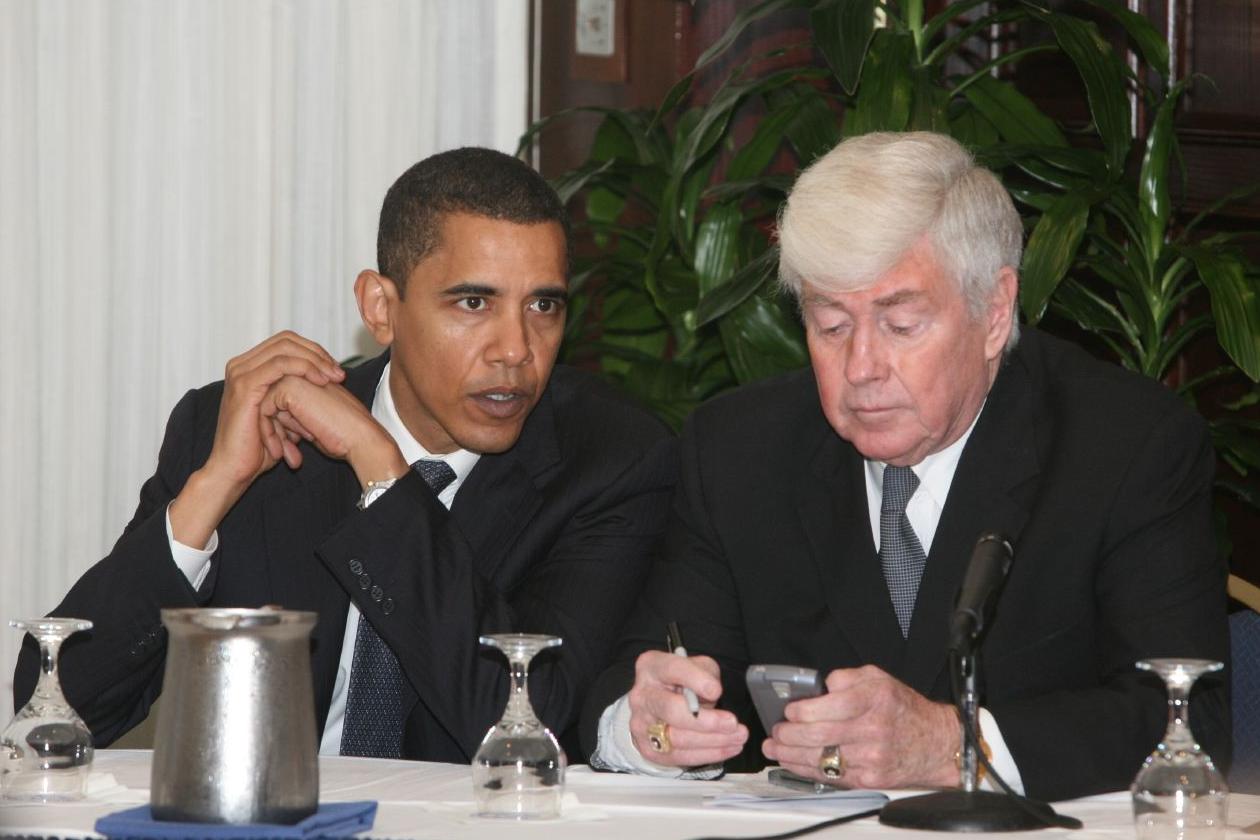
In 1997, when Newt Gingrich faced a House ethics controversy, Kemp served as an intermediary between Bob Dole and Gingrich, helping to save the Republican Party leader's position. Later, in 2002, when Trent Lott made controversial remarks about Strom Thurmond, Kemp expressed his displeasure and supported Lott's apology, stating he had encouraged Lott to "repudiate segregation in every manifestation." In 2005, Kemp was among the prominent leaders who pledged to raise money for Scooter Libby's defense when Libby was charged with perjury and obstruction of justice in a case concerning the release of Central Intelligence Agency information.
In June 2004, Kemp withdrew his support for Vernon Robinson's congressional campaign due to Robinson's views on immigration laws, citing Robinson's alignment with a "Pat Buchanan Republican" platform. In 2006, Kemp co-chaired the Council on Foreign Relations task force on Russia with 2004 vice-presidential nominee John Edwards, resulting in the document "Russia's Wrong Direction: What the United States Can and Should Do." After their task force roles, the pair continued to advocate for solutions to poverty in America.
On January 6, 2008, Kemp endorsed John McCain in the 2008 Republican presidential primaries shortly before the New Hampshire primary, a move that surprised many conservative Republican tax cutters. As McCain neared the official nomination, the press increasingly associated him with Kemp. Kemp prepared an open letter to conservative talk show hosts like Sean Hannity, Rush Limbaugh, and Laura Ingraham on McCain's behalf to address their dissatisfactions. Kemp and Phil Gramm also advised McCain on economic policy. Kemp was also a syndicated newspaper columnist.
In February 2008, Kemp was associated with a group called "Defense of Democracies," which advocated for an electronic surveillance bill that failed in the House of Representatives. The group's television ad generated controversy, leading some of its advisors, including Chuck Schumer and Donna Brazile, to resign. He was a member of the advisory council of the Victims of Communism Memorial Foundation and served as co-chair of the Abraham Lincoln Bicentennial Commission Cabinet. He was also a board member for the Lott IMPACT Trophy, named after Pro Football Hall of Fame defensive back Ronnie Lott, which is awarded annually to college football's Defensive IMPACT Player of the Year.
8. Illness and Death
Jack Kemp's final years were marked by a battle with cancer, during which he continued to engage in public life until his passing.
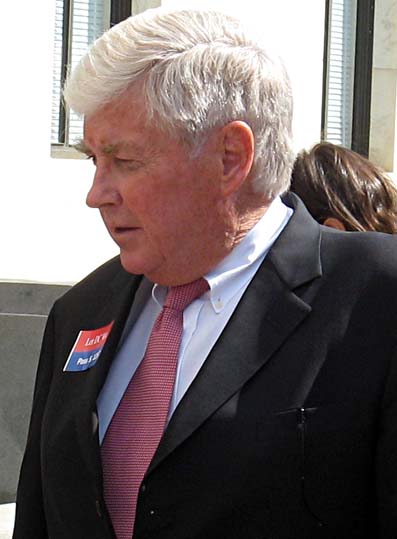
8.1. Illness and Death
On January 7, 2009, Kemp's office released a statement announcing that he had cancer. The specific type of cancer and the anticipated treatment plan were not publicly disclosed at the time, though it was later revealed to be likely melanoma. Despite his illness, Kemp continued to serve as chairman of his Washington-based Kemp Partners consulting firm and remained involved in his charitable and political work until his death.
Jack Kemp died from cancer at his home in Bethesda, Maryland, on May 2, 2009, at the age of 73. Public tributes and condolences poured in following his death. President Barack Obama praised Kemp's efforts on issues of race, emphasizing that Kemp understood how divisions along racial and class lines impeded the nation's shared goals. Former President George W. Bush stated that Kemp "will be remembered for his significant contributions to the Reagan Revolution and his steadfast dedication to conservative principles during his long and distinguished career in public service."
9. Legacy and Assessment
Jack Kemp's legacy is defined by his significant contributions to American politics and sports, particularly his influence on conservative economic thought and his unique approach to social policy.
9.1. Major Achievements and Contributions
Kemp's most significant achievements include the Kemp-Roth Tax Cut of the 1980s, which is often referred to as the first of two "Reagan tax cuts." This legislation served as a foundational element of supply-side economics, a key component of Reaganomics. Many Republicans, drawing on the Laffer Curve theory, continue to endorse his view that tax cuts can stimulate economic growth and reduce deficits. While George H. W. Bush famously dismissed this philosophy as "voodoo economics," both George W. Bush and his Treasury Secretary, John W. Snow, became proponents.
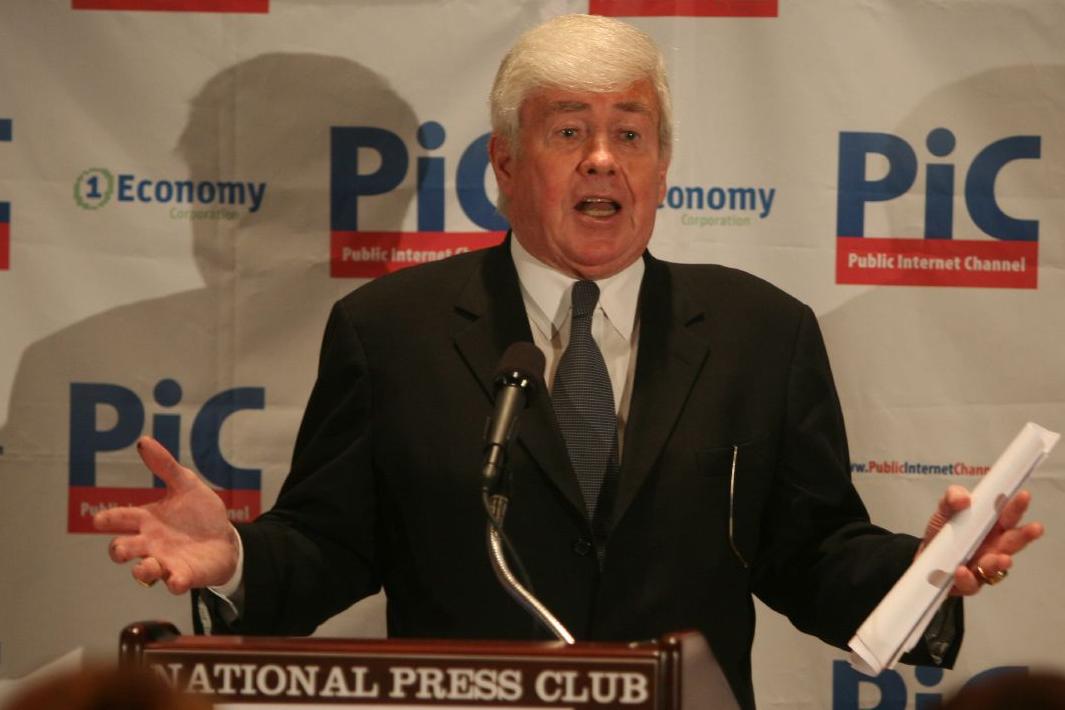
Kemp is also remembered as a political figure who, despite electoral defeats, influenced history by shifting the direction of presidential elections, akin to figures like George Wallace and William Jennings Bryan. In the early 21st century, Kemp, alongside Reagan, was still considered a primary architect of supply-side tax cuts, and with Steve Forbes, he maintained its prominence in political discourse. He has been lauded as a beacon of economic conservatism and a hero for his urban agenda, especially by fiscal conservatives who believe in the superiority of free markets and low taxes over government bureaucracies. Kemp was considered a leader among progressive conservatives-those who are socially conservative but reject protectionist fiscal and trade policies.
Throughout his career, Kemp built alliances across the political spectrum. He collaborated with figures like Newt Gingrich and Trent Lott on deregulation and tax cuts, and advised John McCain and Phil Gramm on economic policies involving tax cuts and spending restraints. He legislated with and campaigned for Joseph Lieberman, and worked with James Pinkerton on poverty initiatives. Pete du Pont was another progressive conservative ally. Even after leaving Congress and the Cabinet, Kemp remained close to Gingrich, Lott, and Vin Weber. He was a member of the federal committee that promoted Martin Luther King Jr. Day as a national holiday. As a progressive Republican, he earned the support and friendship of civil rights leaders such as Benjamin Hooks, Andrew Young, and Coretta Scott King, as well as conservative Black intellectuals like Glenn C. Loury and Robert L. Woodson. He also maintained friendships with Democratic figures like William H. Gray III, Charles B. Rangel, and Robert Garcia. Ken Blackwell served as a Deputy Secretary under Kemp. During Reagan's presidency, when Kemp was influencing tax cuts, Democrat and former basketball star Bill Bradley was a leading proponent of tax-cutting in the United States Senate.
Several American football players have followed Kemp's path into Congress, including Steve Largent, J. C. Watts, and Heath Shuler. Congressman Paul Ryan publicly cited Kemp as a mentor in his 2012 Republican vice-presidential nominee acceptance speech. In 2014, at a Jack Kemp Foundation forum, journalist Fred Barnes stated that "Growth is obviously what Jack Kemp was about," highlighting Kemp's unwavering belief in economic expansion and his dismissal of limits to growth theories, which led him to criticize the 1991 Report of the United Nations Population Fund as "nonsense."
One day after Kemp's death, Senator Arlen Specter provocatively claimed that Kemp would still be alive if the federal government had provided better funding for cancer research, a severe critique of federal policy. Following Kemp's passing, his son, Jimmy Kemp, established the Jack Kemp Foundation, a 501(c)(3) charitable organization dedicated to continuing his father's legacy. Based in Washington, D.C., the foundation's mission is to "develop, engage and recognize exceptional leaders who champion the American Idea: growth, freedom, democracy and hope." In recognition of his impact, the football stadium at Occidental College, his alma mater, was named after him.
9.2. Criticism and Controversies
Despite his significant achievements, Jack Kemp's career was not without criticism and controversy. He was sometimes perceived as a verbose speaker who could lose contact with his audience. Campaign managers during his 1988 presidential bid found him difficult to manage, noting his tendency to ignore timers during speeches, refuse to contact contributors, and decline practice for debates.
His shift in positions during the 1996 vice-presidential campaign drew criticism. For example, he had to publicly support the expulsion of children of illegal immigrants from public schools, despite his long-standing opposition to California's Proposition 187. He also had to temper his opposition to abolishing affirmative-action programs in California. Some detractors accused him of being a "con artist" for these compromises. Furthermore, critics, such as U.S. News & World Report writer Steven V. Roberts, poked fun at his frequent use of football metaphors in political speeches, suggesting he recounted stories of passing balls more often than passing bills.
Kemp also faced scrutiny over his post-public office business dealings. He resigned as co-chairman of Freedom Works in 2005 due to an FBI investigation into his ties to Samir Vincent, an oil trader involved in the U.N. Oil-for-food scandal. Vincent pleaded guilty to charges including illegally lobbying for the Iraqi government of Saddam Hussein, and testimony about Kemp emerged during the trial. Additionally, Kemp's partnership in a failed anti-terrorism software company called Blxware was investigated for allegedly defrauding the federal government of 20.00 M USD in contracts for software that falsely claimed to detect secret messages from Al-Qaeda in television broadcasts.
His tenure as United States Secretary of Housing and Urban Development was generally considered unsuccessful in terms of legislative achievements. While he managed to clean up HUD's reputation, his major initiatives, such as enacting enterprise zones and promoting public housing tenant ownership, failed to secure substantial federal funding due to opposition from Congress and within the Bush administration itself, particularly from Budget Director Richard Darman. He was also criticized for being one of the administration's leading users of first-class corporate jets, citing a lingering knee injury as the reason for this expense.
10. Books
In addition to his political and sports careers, Jack Kemp authored, co-authored, and contributed to several books, primarily focusing on economics, politics, and policy.
- An American Idea: Ending Limits to Growth (Washington, DC: American Studies Center, 1984)
- Tax policy and the economy : a debate between Michael Harrington and Representative Jack Kemp, April 25, 1979. (New York, N.Y. : Institute for Democratic Socialism, 1979)
- An American Renaissance: Strategy for the 1980s (Harper & Row, 1979)
- The IRS v. The People (Heritage Books, 2005), authored by Ken Blackwell and edited by Kemp
- Trusting the People : The Dole-Kemp Plan to Free the Economy and Create a Better America (HarperCollins, 1996), coauthored with Bob Dole, narrated by Christine Todd Whitman
- Together We Can Meet the Challenge : Winning the Fight Against Drugs (U.S. Department of Housing and Urban Development, 1994)
- Pro Sports: Should the Government Intervene? (American Enterprise Institute for Public Policy Research, 1977)
- U.S. By the Numbers: What's Left, Right & Wrong with America (Capital Books, Incorporated, 2000), with Raymond J. Keating and Thomas N. Edmonds
- Our Communities, Our Homes: Pathways to Housing and Homeownership in America's Cities and States (Joint Center for Housing Studies, 2007), with Henry G. Cisneros, Kent W. Colton, and Nicolas P. Retsinas
Kemp also wrote the foreword to several books, including:
- Reaganomics: Supply Side Economics in Action (Westport, Conn.: Arlington House, 1981) by Bruce R Bartlett with Arthur Laffer
- Raoul Wallenberg: Angel of Rescue by Harvey Rosenfeld (Prometheus Books, 1982)
- Best Editorial Cartoons of the Year: 1986 Edition by Charles Brooks (ed.) (Pelican Publishing Company, Incorporated, 1986)
- Leadership Is Common Sense by Herman Cain (Tapestry Press, 2001)
- Whole World's Watching: Decarbonizing the Economy and Saving the World by Martyn Turner and Brian O'Connell (Wiley, John & Sons, Incorporated, 2001)
11. See also
- Electoral history of Jack Kemp